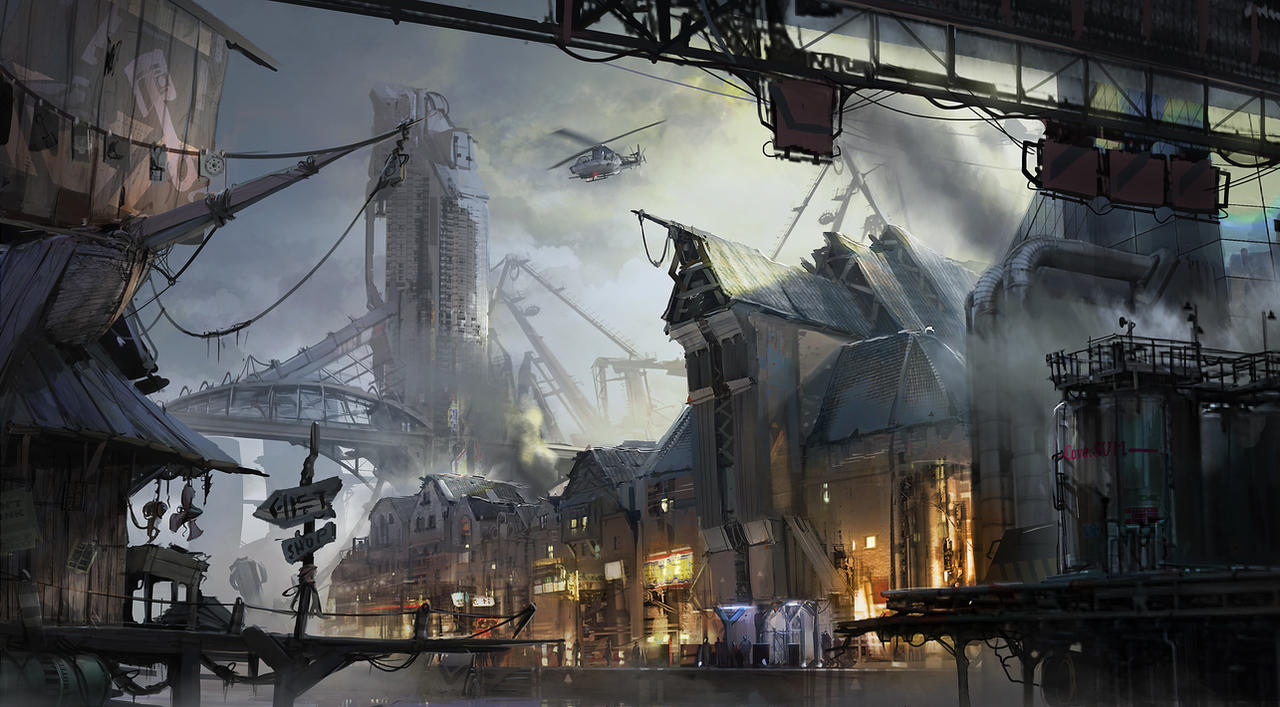Old Town
Historical Overview
Once known as Charlestown, Old Town was Boston’s first neighborhood, established in the 17th century and steeped in the legacy of early colonial America, the Revolution, and centuries of maritime trade. It was a working-class stronghold, home to shipbuilders, dockworkers, and tight-knit communities that resisted waves of industrialization and gentrification. By the 20th century, it became infamous for organized crime, smuggling, and generations-old family feuds, maintaining an uneasy balance between heritage and lawlessness.
Neo-Boston Version
Now known as Old Town, this district remains one of the least modernized parts of Neo-Boston, where old brick buildings, gaslit streets, and historic landmarks stand defiant against the encroachment of neon-lit corporate sprawl. While the city around it has embraced cybernetic augmentation, corporate policing, and automated commerce, Old Town clings to something older—a place where business is still done in handshakes and whispered agreements, and where the past holds as much weight as the present. The district’s inhabitants, a mix of legacy families, black-market traders, and esoteric scholars, keep outsiders at arm’s length, cultivating an air of exclusivity and quiet defiance.
Despite its resistance to modernization, Old Town remains economically and strategically valuable. The remnants of its historic docks, underground tunnels, and trade networks have found new life in the shadows of Neo-Boston, servicing a market that neither corporations nor the government fully control. The Winter Hill Gang still holds sway here, though their influence is less visible than in the South End, and various private interests—collectors, fixers, and historians—compete to control the district’s deeper mysteries.
Behind the Mist
The Mist in Old Town is thin, fractured, and restless. Here, history refuses to be forgotten, and the past can physically impose itself on the present. People occasionally see things that should not be there—figures from another time, landmarks that don’t exist anymore, and doors that lead to places outside of logic. The deeper one ventures, the more the Mist falters, flickers, and fails, allowing glimpses of something older than the city itself.
It is whispered that certain relics, books, and artifacts stored here retain their true nature, immune to the Mist’s obscuring power. Some believe Old Town itself is a wound in reality, a place where things lost to time resurface, and those who seek forgotten knowledge risk being found by it in return. The district is home to those who remember, those who search, and those who are bound to what came before—whether they wish to be or not.
Points of interest
- The Five Points – The historic heart of Old Town, a crossroads of centuries-old buildings now housing everything from dive bars to cyber-clinics.
- Murphy’s Wake – A generations-old Irish pub, filled with old-world memorabilia and modern security, known for being a neutral ground for negotiations.
- Freedom Pier – Once a key trade hub, now partially converted into a high-end marina, while its abandoned sections serve as hideouts for illicit operations.
- St. Vincent’s Cathedral – A towering Gothic church, one of the last remaining symbols of Old Town’s past, offering sanctuary to those in need.



Comments